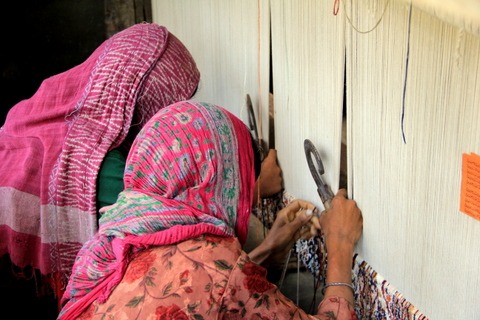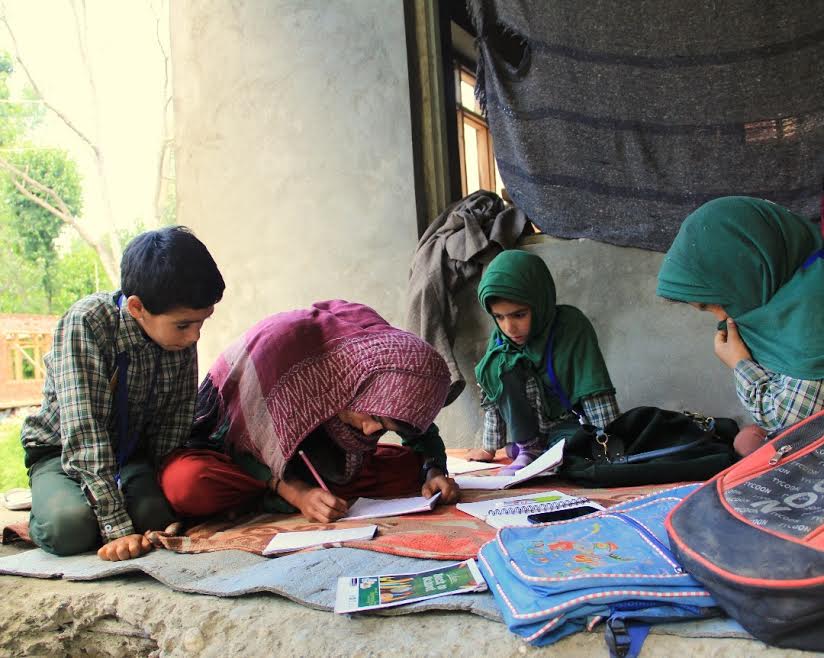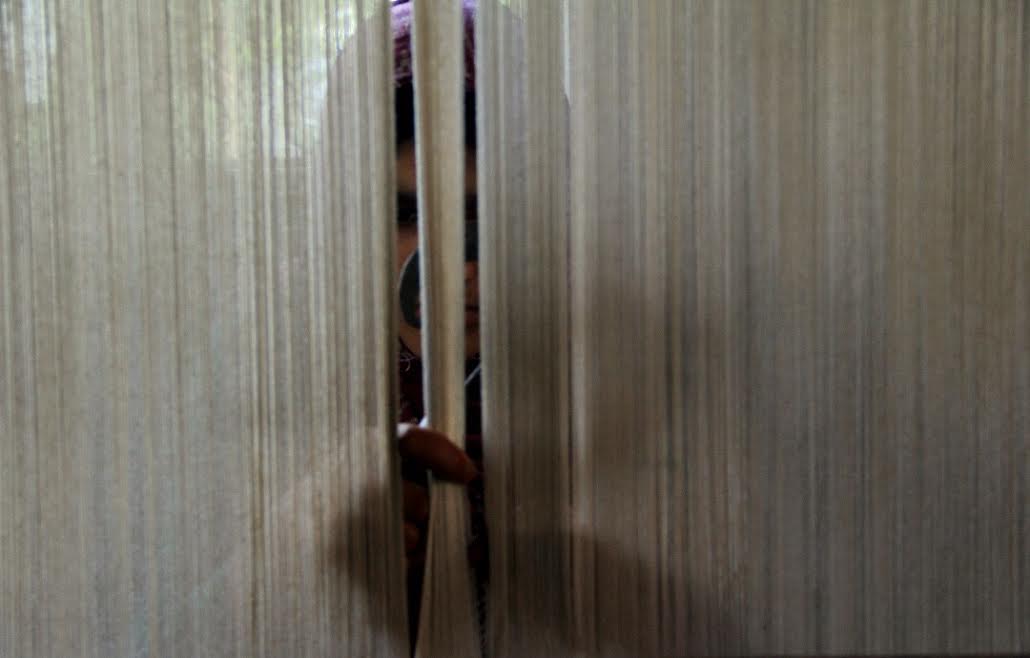Decades old conflict in Kashmir affected every sphere of life in Kashmir. But beneath this conflict, some alarming social issues are getting buried. People, victim to these issues, have no voices thus making them a deprived section of the society.
Living in the low lying region of Sumbal, Sonawari a 35 minute drive from the main Srinagar city, most cultivable land is still under water from the 2014 floods.
Mubeena and her friend Iqra start their day on different notes. While Iqra packs her bag for school, 13 year old Mubeena’s day starts with readying her siblings for school and proceeds with helping her parents in weaving carpets. She was in her second grade when she last went to school. Today she would have been a 7th grader.
In Kashmir’s rural areas, children are visibly losing out on education and turning to low earning jobs to support their families. With little hair on their faces and a puberty voice, young boys are commonly seen working as bus conductors, salespersons and laborers and young girls as house maids.
The 2001 census reported that 1,75,000 children were working as laborers in Jammu and Kashmir. Today there is no statistical data, only rough estimates. The children remain vulnerable to abuse and exploitation.
Mubeena has been training in weaving carpets for years now. It earns her 100-150 Rs ($1.5-$2) per day and on some days, the earning remains confined to 50 Rs.

FPK Photo/Afshan Rashid
Third and the only girl child in the family, Mubeena was taken out from school to have her look after her other siblings. “Additionally we wanted to have her contribute to the financial state of the family we taught her the art of Carpet weaving”, said her mother Ameena who is in her late 30’s.
In Nowgan a small hamlet in Sumbal, limited income is forcing many children to quit education and assist their parents in earning livelihood in order to make their ends meet.While boys work as laborers in the fields, young girls are confined to household chores.
For her mother, it is nothing unusual. “I was also of her age when my parents sent me to learn this ‘art’, her father has also worked since he was a child,” she explains while Mubeena listens patiently.
Starting work at an early age has made Mubeena too reserved for her age. She is unable to express her aspirations for future but mentions her desire to be at school repeatedly.
Every afternoon Mubeena waits for Iqra to tell her about the things she learns at school and the games she plays. While Iqra narrates, Mubeena gives herself an imaginary treat of what it could have looked like if she was in school.
At 3PM, her siblings are back from school open their books before her to guide them in doing their homework. With a pencil in her hand, she collects all the notebooks and begins her task.
“All the children from around bring their home work to her and she helps them in writing it,” tells her mother.

FPK Photo/Afshan Rashid
While Mubeena is keen to go back to school and her parents understand the injustice they have done to their daughter, they also feel it’s too late to make a start now. “She may not coup up with the pressure and would succumb,” says her mother.
To protect the children for working at a young age, The Child Labour (P&R) Act 1986 is in place, whereby the state puts total ban on engagement of Child Labour below the age of 14 years.
Under the act the government has also constituted District Level Advisory Boards. The act also empowers the Block development officers, Tehsildars and Village Level workers to intervene in such cases and orders for the creation of committees to be headed by the Dy. Commissioner of the district.
The law is however not easy to implement because in most cases the children work within the families.

The only major NGO working in the state for the cause is Save The Children. The NGO has set up Child Protection Committees (CPC) in areas like Leh, Kargil, Budgam, Ramban, Rajouri and Poonch to identify and intervene for the rescue of such cases.
Mohd. Sharief Bhat, state project manager Save the Children believes that CPCs have been successful in almost all the areas where it was implemented.
“Although the indigenous child labor is an alarming issue but a check needs to be kept on the foreign child labor being pumped into the state for domestic and industrial work by agencies and consultancies,” says Sharief.
Living in the same area, Haseena, an activist, worked as a labourer in the carpet weaving as a teenager. “I had to sit in one posture for the whole day and only move my hands over the handloom. I told my elder sister that I want to study and if she could help me going back to school,” she recalls.
Her sister did. She helped her get back to school and today she is one of the first females from her village to receive a Master’s Degree.

Haseena belives that Mubeena is not the only victim of child labour in her village but “every house hold in the village has one such story to tell and the adjoining areas also have similar stories to share,” claims Haseena.
Most of the households of the village earn their living from carpet weaving which fetches them only the daily meals. This compels at least one child in a family to sacrifice their dreams so that others could fulfill theirs.
“The total population of this village is 9,929 and a majority of them live below the poverty line. No major intervention has been done so far to help them in making their lives better,” says Haseena.






